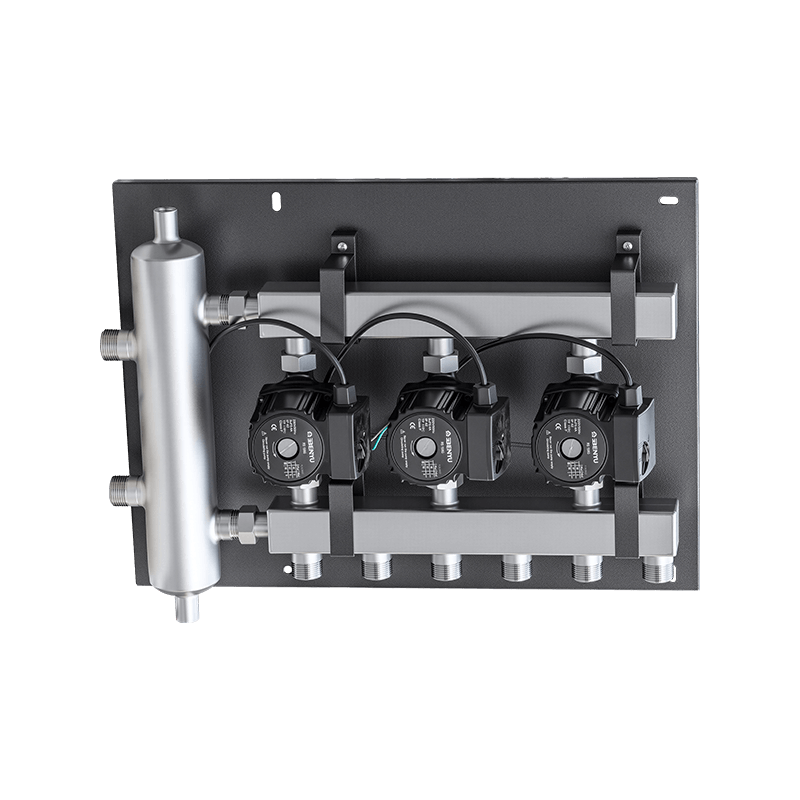The push toward energy-efficient and sustainable heating solutions has influenced how both professionals and homeowners approach system design. Among the components gaining attention in this space is the Manifold Cabinet, a key part of modern integrated heating systems. Once seen as just a practical housing for piping connections, it’s now recognized for the role it plays in achieving a cleaner, more organized, and more efficient heating layout.

The Manifold Cabinet helps streamline the distribution of heated water throughout a building. In traditional setups, pipe routing could get messy and inefficient, especially in larger properties. With integrated heating systems becoming more common in homes, offices, and even smaller commercial buildings, there’s a growing need for neat and accessible control points. That’s where the Manifold Cabinet comes in—it provides a centralized spot to manage flow to different zones, making installations easier to maintain and expand when needed.
But the interest in Manifold Cabinets isn’t just about aesthetics or convenience. Their use also fits into broader trends around sustainability. Integrated heating systems rely on balanced distribution of heat, often working with low-temperature water sources like heat pumps or solar-assisted boilers. When designed well, the system less energy waste. The Manifold Cabinet supports this by allowing for precise control and flow regulation to each zone, helping keep temperatures consistent without overworking the system.
One of the big reasons these cabinets are gaining popularity is the rise in multi-zone heating. People want to heat rooms independently—for comfort, for energy savings, and sometimes just for better control. With a quality Manifold Cabinet, that kind of zoning is far simpler to manage. Each loop or zone of the integrated heating system can be controlled directly from the cabinet, with manual or automatic valves offering flexibility for all kinds of applications.
Installation teams also appreciate how much simpler the overall process can be. Instead of scattered pipes running behind walls and floors with little clarity, the Manifold Cabinet gives a clear overview of what connects where. It speeds up installation time and makes troubleshooting much less of a headache. In renovations, especially, this can be a major benefit—particularly in buildings where space is tight or where the original heating layout is hard to access.
Another factor adding to their adoption is the shift toward clean interior design. More clients expect mechanical elements to be both hidden and accessible. A flush-mounted or wall-recessed Manifold Cabinet meets both of those expectations. While it keeps valves and piping tucked away, it also provides easy access for maintenance without needing to open up walls or dig through flooring.
The increased focus on water-based integrated heating has also helped. These systems often pair well with renewable sources, making them attractive for sustainable construction. The modular structure of a Manifold Cabinet works well in these setups, giving technicians more control over flow rates, return temperatures, and system balancing. That level of detail may seem small, but it makes a noticeable difference in energy use over time.
As energy codes and building standards evolve, it's likely we'll continue seeing more emphasis on smart design and flexible systems. The Manifold Cabinet might not be the flashiest part of a heating install, but its contribution is clear. When paired with a thoughtful integrated heating layout, it helps systems run more efficiently, stay organized, and adapt as building needs change.
The growing interest in sustainable heating isn't just about the heat source—it's also about how that heat is distributed. The rise of the Manifold Cabinet shows that small changes in infrastructure can have a meaningful impact. With integrated heating systems continuing to evolve, it's no surprise that this once-overlooked component is now gaining the recognition it deserves.

 Language
Language













 Qigang Road, Huanghuaguitou Industrial Zone, Liu Shi Town, Yueqing City, Wenzhou City, Zhejiang Province
Qigang Road, Huanghuaguitou Industrial Zone, Liu Shi Town, Yueqing City, Wenzhou City, Zhejiang Province 



